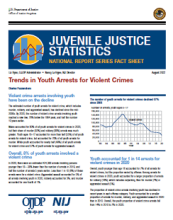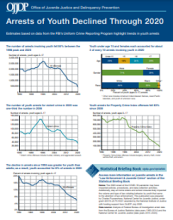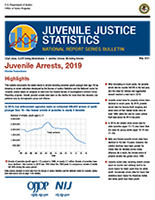Aggravated assault
Relationship Between Violence and Mental Disorder
Alternative Data Base for the Determination of Crime Trends in American Cities: A Research Note
Termination of Criminal Careers: Measurement of Rates and Their Determinants: A User's Guide to the Machine- Readable Files and Documentation and Original Codebook
Psychological Impact of Crime: A Study of Randomly Surveyed Crime Victims, Executive Summary
Duration of Adult Criminal Careers - Final Report
Violent Crime Cases in Juvenile Court, 2021
A Study of the Criminal Victimization of Policewomen by Other Police Officers
PAROLE VIOLATION PATTERNS AND COMMITMENT OFFENSE
Religious Contexts and Violence in Emerging and Traditional Immigrant Destinations
Linking emergency care and police department data to strengthen timely information on violence-related paediatric injuries
Gunshot Detection Technology Effect on Gun Violence in Kansas City, Missouri: A Microsynthetic Control Evaluation
Effects of building demolitions on firearm violence in Detroit, Michigan
Trends in Youth Arrests for Violent Crimes
Arrests of Youth Declined Through 2020
Understanding Socio-environmental and Physical Risk Factors Influencing Firearm Violence
Multilevel Evaluation of Project Safe Neighborhoods
Project Safe Neighborhoods (PSN) is a DOJ-sponsored initiative to reduce violent crime, particularly gun crime, by fostering cooperation by criminal justice agencies and local partners to develop and implement strategic approaches.
See the YouTube Terms of Service and Google Privacy Policy
NIJ-Funded Research on Firearms Violence in Urban Cities Advancing Scientific Evidence to Inform Practice
In this full thematic panel, renowned experts will present a series of papers summarizing the newest findings of NIJ-funded research projects on criminal offenses with firearms in urban areas. Researchers used various criminological and other theories, including routine activity theory, socio-ecological and socio-environmental perspectives, and advanced mixed-study methods, including surveys and spatio-temporal designs, to produce scientific evidence to inform practice.
See the YouTube Terms of Service and Google Privacy Policy
Juvenile Arrests, 2019
Expanding Research to Examine the Impacts of Forensic Science on the Criminal Justice System
In 2004, the National Institute of Justice created the social science research on forensic sciences (SSRFS) research program to explore the impact of forensic sciences on the criminal justice system and the administration of justice. Much of the early research from the SSRFS program focused on DNA processing and the use of DNA in investigations and prosecutions.
See the YouTube Terms of Service and Google Privacy Policy






